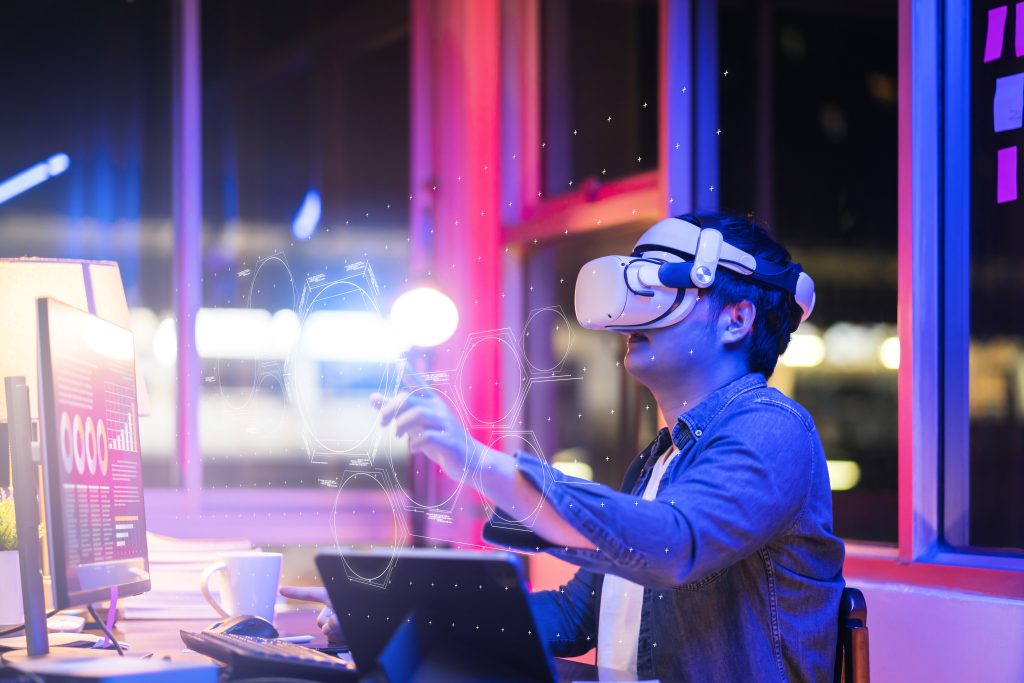The rise of AI virtual avatars in e‑commerce is transforming how brands connect with shoppers—streamlining 24/7 live sales, offering hyper-personalization, and delivering consistent performance. In this shifting landscape, avatars are becoming true game-changers in online retail.

1. What Are AI Virtual Avatars—and Why Now?
AI virtual avatars are computer-generated personas—visually lifelike, scripted, and powered by generative AI—that stream or chat with shoppers in real time, even outside human working hours. These avatars rely on advanced tools like large language models for dialogue and AI-generated video for realistic visuals.
Their growing prominence stems from several converging factors:
- Technological Maturation: Synthetic video, real-time animation, and generative language have matured, making digital avatars more realistic and affordable than ever before..
- Proven Sales Impact: In real-world tests, avatars have driven significant sales increases—such as a 30% lift in livestream sales, and $2,500 in revenue in just two hours from one AI host.
- Market Growth: The AI avatar market is rapidly expanding—from about USD 0.8 billion in 2025 to nearly USD 5.9 billion by 2032, at a projected CAGR of 33 %.
Taken together, AI avatars are no longer niche curiosities—they’re increasingly central to the evolving digital commerce ecosystem.
2. AI Virtual Avatars in Action: Real-World Use Cases
2.1 China: AI Reigns in Livestream Commerce
In China, AI avatars on platforms like Taobao and Pinduoduo are already outperforming human hosts. Shanghai’s PLTFRM launched a digital avatar for Brother printers that streamed 24/7. It achieved a 30% boost in sales and earned $2,500 in just two hours.
Another case: Baidu’s AI version of e-commerce influencer Luo Yonghao hosted a six-hour livestream that pulled in over 13 million views and nearly RMB 55 million (~USD 7.7 million) in sales.
These successes show how avatars provide consistent, scalable performance—without tiring, losing energy, or needing breaks.
2.2 Global Brand Adoption
Beyond livestreaming, AI-powered personalization tools are gaining traction in luxury and mainstream retail:
- Saks Global (owner of Saks Fifth Avenue and Neiman Marcus) introduced AI-curated, personalized homepages driven by browsing behavior—resulting in ~7% higher revenue per visitor and ~10% boost in conversion rates.
- In broader retail, AI “super agents” like Walmart’s “Sparky” are being rolled out—capable of tailored recommendations, order management, and even recipe suggestions.
2.3 Fashion & Try-On Innovations
Avatar tech isn’t limited to sales streaming. Fashion brands are leveraging digital twins to reduce returns by showing highly accurate, custom-fit visuals of clothing on user models. This innovation is currently being trialed by names like Balmain and YNAP.
Apps like Doji allow users to create personalized virtual selves and try on outfits—attracting early investment from groups like Reddit cofounder Alexis Ohanian’s VC fund.
3. Market Forces Powering Avatars Forward
Explosive Growth Expectations
- The AI avatar market is forecasted to surge from USD 0.8 billion in 2025 to USD 5.93 billion by 2032 (CAGR ~33 %).
- Another report expects even faster growth—top USD 63.5 billion by 2034, driven by demand for personalized, interactive digital experiences.
Expanding Use Cases
Originally used for livestreaming, avatars now span:
- Virtual assistants and customer support, operating at minimal cost.
- Influencer replacement or augmentation, offering brand-controlled messaging.
- Companions, educators, entertainers, integrating in metaverse and training contexts.
Regional Adoption Trends
While early adopters are in China and North America, the use of avatars is spreading globally—spurred by Western brands testing English-language versions and platforms like YouTube and TikTok.
4. The Appeal—and Reservations—of AI Avatars
Advantages Driving Adoption:
- Unwavering Availability & Efficiency
Avatars work 24/7, don’t tire, and maintain consistent messaging—key in livestream and automated support environments. - Cost Control & Scalability
Initial development is costly, but once created, avatars cost less to operate than human staff. This appeals to brands seeking greater message control and budget stability. - Personalization at Scale
With integrated AI, avatars can respond dynamically and tailor pitches based on user data—offering more engaging customer experiences.
Challenges and Concerns:
- Authenticity Gap
Audiences—especially younger ones—can feel disconnected from overly perfect avatars. Discovery that an influencer is AI-generated may erode trust. - Technical Vulnerabilities
Avatars are susceptible to glitches. In one notable incident, an avatar began meowing mid-stream due to a comment-based prompt injection attack. - Ethical and Social Implications
As AI replaces or supplements human labor, questions arise about impact on jobs, transparency with consumers, and data handling. Consumer privacy deserves careful attention.
5. What Lies Ahead: Trends & Evolution
Hybrid Human‑Avatar Models
Many brands are blending approaches—humans initiate livestreams with energy, then let avatars take over when fatigued—combining authenticity with endurance.
Global Expansion & Multilingual Use
Though primarily developed in China, avatars are being adapted for global use—though language fluency and cultural nuance remain hurdles to overcome.
Cross-Industry Penetration
Applications are extending beyond e-commerce:
- Training and education (e.g., Colossyan’s corporate avatar videos).
- Beauty and fashion interactive experiences (e.g., Perfect Corp’s virtual try-on beauty tools).
- Personal shopping assistants and metaverse use cases.
Regulators and Consumer Trust
As AI integration grows, so will calls for transparency—disclosures that content is avatar-generated, privacy audits, bias mitigation, and user education will be increasingly important.
6. Why It Matters: Final Takeaways
- Retail & Marketing Reimagined
Driven by data and scalability, AI avatars let brands reach deeper with fewer human limitations. - Industry Disruption & Transformation
From livestreaming to fashion, AI avatars are challenging established norms across sectors. - Demand for Ethical Innovation
To stay credible, brands must deploy avatars transparently, fairly, and responsibly. - User Experience Redefined
Avatars offer seamless personalization, instant responses, and round-the-clock accessibility for consumers.
By capitalizing on their strengths while addressing their limitations, AI virtual avatars in e‑commerce are fast becoming essential—but disciplined—elements of the digital economy. Their evolution signals a shift in how brands communicate, sell, and build trust in a tech-driven world. As consumer expectations rise and competition intensifies, the ability to combine 24/7 efficiency with meaningful digital interaction will define the future of online retail success.
References
- Liao, S. (2025, August 20). Chinese ‘virtual human’ salespeople are outperforming their real human counterparts. Available at: https://www.wired.com (Accessed: 20 August 2025).
- Reuters. (2025, August 20). Influencers have defences against an AI onslaught. Available at: https://www.reuters.com (Accessed: 20 August 2025).
- Saks Global. (2025, August 14). Inside Saks Global’s personalisation strategy. Available at: https://www.voguebusiness.com (Accessed: 20 August 2025).









